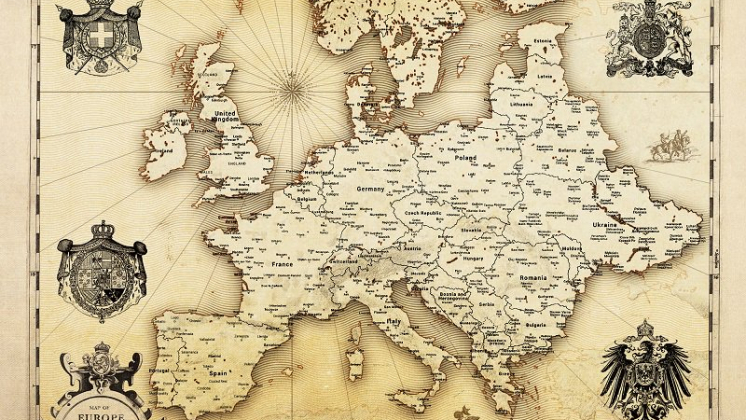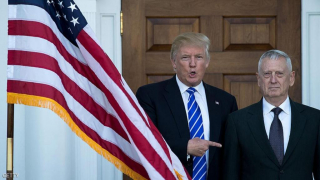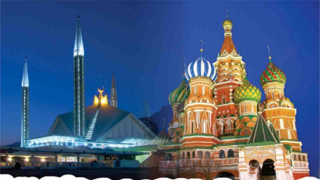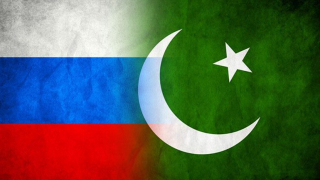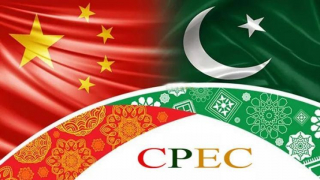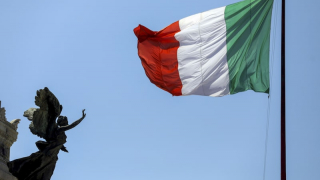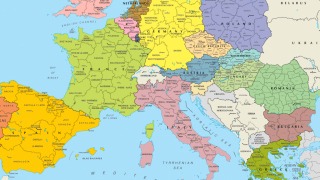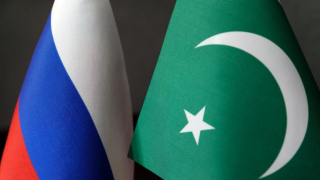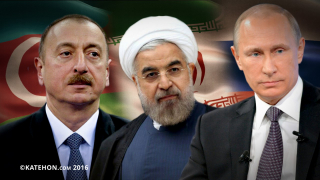Europe: An Empire of 400 Million
Jean Thiriart remains one of the most interesting of the geopolitical theorists of pan-Europeanism in the post-1945 era. His interest as an ideologue is augmented by also having been a devoted activist in the Occident-wide movement he created, Jeune Europe, and it is in prison that he began to write this book in 1962. He was what Mosley described as a rare breed, the ‘Thought-Deed Man’. First published in 1964 this skilfully translated English translation is rendered by the Indian scholar Dr Alexander Jacob, which includes an introduction to Thiriat’s life. The footnoted references on names and events mentioned by Thiriart, are particularly useful.
Thiriart was a proponent of a ‘unitarian’ European nation. His conception is reminiscent of Sir Oswald Mosley’s ‘Europe-a-Nation’. Thiriart was one of the delegates at the Venice Conference in 1962 where Sir Oswald Mosley represented Union Movement, with delegates from the German Reichspartei and Italian Social Movement. However, it seems likely that Thiriart was the most passionate exponent of a totally unified Europe, perhaps even more so than Mosley, whose slogan ‘Britain First in Europe a Nation’ contained elements of the old nationalism that Thiriart vehemently repudiated.
However, there is a similarity of thinking between Mosley and Thiriart on numerous primary issues. Thiriart’s ongoing Promethean quest seems to accord with Mosley’s Faustian ‘Doctrine of Higher Forms’, (Mosley, Europe Faith & Plan, Euphorion, 1958, pp. 143-147). Both saw the reclaiming of Sub-Saharan Africa as providing the pioneer challenges to forge a higher man in a quest of self-overcoming suggestive of the Nietzschean. Both also saw European friendship with the Arab states as pivotal, Thiriart going so far as to suggest that Arabs, and specifically Berbers, could be incorporated into Europe.
While Thiriart had entered post-war politics as a supporter of the French in Algeria and the Belgians in the Congo, with the formation of Jeune Europe his geopolitical outlook, being committed to the liberation of Europe from extra-European powers, underwent significant changes, to the point where the movement formed extensive alliance with Arabs, including the former Algerian enemy, and Baathists. Among the Arab leaders Thiriart met was President Nasser of Egypt. A pro-Arab, anti-Zionist approach became a major feature of Jeune Europe, the aim being to form European Brigades that would train in the Arab states, while helping to fight Israel. These cadres would bring the fight back to Europe, against the U.S. occupation. One of the Jeune Europe cadres, Roger Coudroy, was killed while serving with al-Fatah in 1968. What a long way pan-Arab and pan-European movements have come – backward – in serving their respective roles in a conflict of Zionist and Atlanticist making.
Right-wing Maintains Fractured Europe
Although the representatives at Venice committed themselves to forming a National Party of Europe and a common declaration was issued, nothing came of the concept. Thiriart’s scathing attacks on the nationalist-right perhaps reveal a bitterness from the failure of the Venice conference, and particularly the insular attitudes of the Italian and German delegates. One such division mentioned by Thiriart, for example, is the conflict between Germans and Italians over the issue of South Tyrol. Thiriart is as scathing of regional separatism in fracturing Europe, such as the conflict in his native Belgium between Flemish and Walloons. It is obvious how he would view the celebrations by the British nationalist-right in regard to BREXIT. Poles are kept out while Africans continue unhindered, and the USA maintains its hold over Britain as pervasively as ever. While Thiriart was no enthusiast for the Common Market, he at least saw its possibilities in encouraging people to start thinking as ‘Europeans’, as did Mosley.
Russia, USA & Europe
While Thiriart does not mention Mosley or the American pan-European philosopher Francis Parker Yockey, it is with the latter that his conceptions of realpolitik find more similarity. Hence, the USA is, as the title of Yockey’s book, The Enemy of Europe, shows, in a pathogenic relationship with Europe that is different from that of Soviet-Russian military occupation. Yockey’s final essay, ‘The World in Flames: An Estimate of the World Situation’, appraised the Third World and Arab states as future allies in Europe’s liberation from the USA; a strategy that Thiriart pursued with vigour.
In Thiriart’s view, Russian maintained its hold over Eastern Europe through brute force of the type that is possessed by a young, ‘immature’ nation. The USA maintains its grip over the rest of Europe through its culture-pathology; the opiate of hedonism, consumerism and the soft option. Where Thiriart did conflict with Mosley, as did Yockey, was in Mosley’s view that Europe needed U.S. protection from Russia.
That Yockey did have a significant influence on Thiriart is confirmed by one of Thiriart’s later colleagues, Dr Christian Bouchet. The last political grouping with which Thiriart was associated was named the European Liberation Front, the title of Yockey’s original post-war group. Bouchet stated to this reviewer that Thiriart had read Yockey’s magnum opus Imperium in the 1960s and had given Bouchet a xeroxed copy in 1991. (Bolton, Yockey: A Fascist Odyssey, Arktos, London, 2018, p. 561). It was as a delegate with the Front that Bouchet and others went to Russia and visited the geopolitical thinker Dr Alexander Dugin, and Gennady Zyuganov, general secretary of the Communist Party of the Russian Federation, which had become part of the new Russian anti-liberal opposition.
Nonetheless, Thiriart does hold the view in this volume that the liberation of Eastern Europe from the USSR, involving 100,000,000 fellow Europeans, is essential to the building the European nation, to the extent that the ‘dedication’ of the book is to those who will fight to liberate that part of Europe from ‘the most brutal form of aggression, that of Russian Communism’. (Thiriart, xxiii). This liberation would take multiple directions, including the banning of the Communist parties as instruments of Moscow strategy; guerrilla warfare, including recruitment of exiles from the East, and a strategy of realpolitik by the European Nation to undermine the USSR’s position geopolitically. This would involve the cultivating of relations with the dissident Communist states, Yugoslavia and Romania. Europe would even back China against Russia in the Far East, to pressure the USSR into withdrawing from Eastern Europe, to pre-Yalta borders. Once that was achieved, united Europe would reverse policy and back Russia against China. Asia would be contained at the Amur River, according to this dialectical strategy. (Thiriart, p. 15). It is indicative of Thiriart’s seriousness as a strategist that he succeeded in gaining official contacts in China, meeting Chou En Lai, and Romania, the Arab states and North Vietnam.
His aim was to incorporate the Slavic lands into Europe, with the Slavs as fellow Europeans as much as any Swede, Spaniard, Italian, German, or Frenchman. He never had Yockey’s early anti-Slav sentiments.
Europe would make the Mediterranean its ‘lake’, and that meant the departure of the American Fleet. On such grounds, with Europe ‘armed to the teeth’, but neutral and freed of U.S. occupation, he hoped Europe could secure accord with Russia.
Yet here too his outlook changed, and the slogan ‘Against Washington and Moscow’, was transformed into ‘With Moscow against Washington’, with the aim becoming Euro-Russian Empire. Alexander Jacob alludes to Thiriart having worked on a book in the early 1980s with the title The Euro-Soviet Empire: from Vladivostok to Dublin, (op. cit., p. 2); albeit not completed for publication.
Unlike the right-wing for which he held contempt, which was still talking about the USSR’s ‘Jewish-communism’, he recognised that the USSR was a pivotal force in opposing Zionism. Indeed, official Soviet publications were exposing the anti-Soviet insurrections, which Thiriart had once heralded as the vanguard of a pan-European struggle, as having been instigated by both U.S. and Zionist factors. (See for e.g. Yuri Ivanov, Caution: Zionism, Moscow, Progress Publishers, 1970; Bolton, Russia & the Fight Against Globalisation, London, 2018, pp. 167-169). Yockey had also come to that conclusion as early as 1952 with an essay entitled ‘The Prague Treason Trial’, which stated that the USSR had changed direction, and that the Right would have to reorient accordingly.
Contra Petty-Nationalism
Thiriart was vehemently opposed to the ‘racism’ and petty-nationalism that divided Europeans. He deplored the old nationalism of fascism and Hitlerism, the territorial disputes that still prevented Europeans from becoming one people, castigating the right-wing parties that could not see beyond national interests, even when they talked of a federal Europe, or a ‘Europe of nations’ or of regions. For Thiriart there could not be anything other than one European people within one European nation. There could not be any German superiority over the Slav, nor rivalry between Flemings and Walloons; indeed no Germans, Poles, or Belgians, but only Europeans.
The Nationalist-Right is committed to petty-statism, on the assumption that it is an historical finality. The suspicion is that Europe-a-Nation, where all are European and nothing other, would be a melting-pot that would obliterate the sundry distinctive cultures of Europe. Indeed such a cosmopolitan Europe has been advanced by Masons, Jacobins, anarchists, liberals, Social Democrats, plutocrats, et al as a step towards a world state, or ‘one world – one race’. Even Otto Strasser, an advocate of a European federation, disputed Mosley’s Europe-a-Nation, calling it ‘one great hodgepodge unit’, that would see the disappearance of Spaniards, Italians, Frenchmen, Germans and Poles… (Otto Strasser, ‘The Role of Europe’, in Mosley: Policy & Debate, Euphorion Books, 1954, p. 80). The opponents of Europe-a-Nation, even while advocating some form of European federalism, object that there is no organic concept of ‘Europe’, as if history must stop at the designation of nation-states as conceived in the post-1918 Wilsonian era, or the post-Soviet era, or even at its earliest, the Westphalian peace of 1648. Yockey, no less a proponent than Thiriart for European Union, saw no reason why European regional particularisms would not only be maintained but enhanced, as certain functions of governance could be localised. Thiriart does not here address the issue.
However, the conception of ‘nation’ has always been in flux rather fixed. Mosley called his Europeanism ‘an extension of patriotism’, and lamented the ultra-nationalism of the old Fascism. There has been an impulsion towards ever wider union, and fracture is often used as a geopolitical weapon by outside forces. Union is impelled by combining against a common enemy, from the earliest tribal days when families started forming into closed kinship and territorial systems, and extended outward through conquest or amalgamation with other kinship bonds for common defence.
Reality of Europe
Thiriart traces the perception of ‘Europe’ back to the Greek victory against Persia at Salamis in 480BC (p. 21) and then against the Carthaginians at Sicily; the role of Empire assumed by Rome; that of Spain during the High Middle Ages against the Moors; Slavs against Tatars; Habsburg Austria against Ottoman’s. Europe had been ‘forged in trials’, from Marathon (490BC) to Vienna (1683AD) where Frenchmen, Poles, and Austrians drove back Turks. Every people in Europe had spilled blood for Europe (ibid., p. 26). To Thiriart the ‘nationalism’ of Wallonian, Flemish, Basque, and Sicilian separatists paralysed Europe; historical destiny would supersede division, and forge a European Nation. The agents of that destiny would be a ‘revolutionary elite’ (ibid., p. 30).
European consciousness has a long pedigree. In describing the Battle of Poitiers against the Arabs in 732AD the Chronicle of Isadore of Poitiers refers to the army of Charles Martel as the ‘Europeans’. The Empire of Charlemagne (768-814AD) is named ‘Europe’ by contemporary chroniclers, and he was called ‘the father of Europe’. The mantle of Saint Henry II during the 11th Century was embroidered with the legend: ‘O blessed Caesar Henry, honour of Europe – may the King who reigns in eternity increase thy empire’. After Henry’s death, a funeral refrain mourned: ‘Europe, now beheaded weeps’. The urge for local rulers to claim sovereignty over ‘nations’ began to facture the organic unity of Europe from the time of Philip the Fair (14th century), and the Reformation accelerated the process. It is notable that with the fracturing of Europe came the rise of the oligarchy; and what Thiriart calls the ‘aristocracy of the sword’, was increasing replaced with a parasitic ‘aristocracy of the court’, its increasing decadence culminating in the Jacobin Revolution.
If Thiriart seemed Russophobic, this was not at all the case. While the dismantling of the Soviet bloc from the Eastern territories was essential, Thiriart offered Russia instead a Europe totally free of American influence, without any territorial ambitions on Russia. Indeed Russia would stand strong as a bulwark against Asia. Its youthful barbarity meant that her destiny is yet to unfold, while the USA was already terminally ill and its only mission was to infect any culture it touched. Thiriart’s final trip before his death in 1992 was to Russia to meet the anti-liberal opposition to Yeltsin. His final thoughts were on a Europe that included Russia, from Dublin to Vladivostok.
The New Socialist Europe
Thiriart eschewed detailed plans on how the new Europe would be organised. The sole focus was first to free and unite Europe. This primarily required geopolitical strategy. However, Thiriart does provide a vision in broad outline.
He had started his youth as a socialist; a member of Jeune Garde Socialiste and the Union Socialiste Anti-Fasciste. (Jacob, vii). Like many Francophone socialists in both France and Belgium he had seen the German occupation of Europe as the chance to create a united socialist Europe. This would not be a Europe of German domination, and it is simplistic or malicious to see all Collaborators as lackeys of Germany. Thiriart had been a member of the Amis du Grand Reich Allemande during the occupation, which emerged mostly from the Left. During the war Thiriart was put on a Resistance death-list. After the war he was imprisoned and lost of political rights until 1959.
It is notable that Belgium’s leading socialist, Henri de Man, also saw the possibility of building a united socialist Europe and viewed German occupation as a chance to throw off capitalism and the bourgeois ethos. While under his leadership the trades union movement cooperated rather than resisted the German occupation, it is erroneous to regard Henri de Man as a lackey of the Germans. Many advances for Belgian workers were extracted by Henri de Man’s trades unions during the occupation, and he remained a close adviser to the King.
In France similar ideas were expressed by leading socialists such as Marcel Déat. Francophone socialism had been in crisis since the late 19th Century, as many saw Marxism and social democracy as inadequate; a new ‘socialism’ that transcended materialism and class war was necessary. (See: Zeev Sternhell, Neither Left Nor Right: Fascist Ideology in France, Princeton University Press, 1986. Here Sternhell also considers Henri De Man and the Belgian Left). It seems plausible that Thiriart came from that milieu. After the war he rejected socialist notions about nationalisation and state bureaucracy. The new Europe would not stifle individual initiative at any level. The entrepreneur must be allowed freedom to develop a strong economy and not be hampered by state regulations, or democratisation in the name of the ‘state’. The productive would be championed, and the parasitic eliminated from the economic life of the European Nation.
What Thiriart called European -communitarianism would replace both speculative capitalism and communism. In particular, a new ethos would be inculcated from the top by a new elite, forged in struggle, eschewing hedonism and instant gratification, who put duty first. The epoch demanded greatness; not democratic party appeals to the mass of voters on trivia, a phenomenon, ‘the coarsening of the voter’ (Thiriart, p. 157) that has only increased. Materialist preoccupations must be transcended for a higher purpose. However, Thiriart was very cognisant that in order for material conditions to be transcended they must first be resolved; and cannot be ignored. Greatness does not come from a people divided by extremes of wealth, where many languish in poverty, ill-health, lack of housing, nutrition and sanitation. One cannot proceed to fulfil potential until the primal necessities of life are met.
The aim was not to champion the proletariat, Marxist style, but nor was it to suppress the proletariat; the aim was to ‘deproletarianise’ by insisting on duties; to create a meritocracy, which would include workers’ self-management (what Mosley called ‘European socialism’), and to maintain those duties through a trade union senate. (Ibid., p. 99). Ownership would be widely distributed rather than concentrated in monopoly or state bureaucracy.
Social classes based on wealth would be replaced by classifications, or ‘classes of men’. At the apex would be a class based on ‘service’, subjected to perpetual renewal to avoid the decadence that comes with social stasis. The ‘parasitic and negative elements’ of the bourgeoisie would be swept away by the duty to work, as would the ‘parasitic’ elements of all classes, while the ‘creative bourgeoisie’ so far from being squeezed into oblivion by oligarchy, or outright exterminated by Communism, would become the backbone of productivity. (Thiriart, p. 110).
This European socialism is antithetical to Marxism. Thiriart observes that what Marxism offers is an appeal to resentment. He sees that Communism everywhere recruits the lowest specimens; it is the doctrine of the anti-hero, the negation of the quest for higher states of being. Mosley critiqued Marxism for the same reason, in explaining his ‘Doctrine of Higher Forms’. Nietzsche referred to the socialist doctrines as appealing to resentiment, and Lothrop Stoddard called it the ‘revolt of the underman’.
However, any talk of ‘socialism’ is meaningless while the USA controls Europe’s resources, and nationalisation achieves nothing under this situation if the economy remains dependent on outside materials, markets and credit.
Europe would be autarchic. This would be enabled by a Europe of 400,000,000, outranking in population both the USA and the USSR, in a self-contained home market. Eastern Europe’s agriculture would complement the industrial output of the rest of Europe once united.
Thiriart & Justicialism
Of particular interest is Thiriart’s reference to a justicialist outlook, in forming ‘one class – producers’, and forming ‘the state of producers’. (Thiriart, pp. 109-110). As Dr Jacob notes, justicialism is translated as ‘social justice’, and refers to the doctrine of Argentine statesman and philosopher Juan Péron. Thiriart was the European exponent of justicialism. Indeed, the two were close colleagues. Thiriart frequently met Péron, who was an avid reader of La Nation Européenne, whose writers included Syrian, Vietcong and Iraqi dipomats, Algerian nationalists, Stockley Carmichael of the Black Panthers, et al,
Thiriart opined that if Spanish were to become the language of the New Europe that would assist in forging a bond between Europe and Latin America, including Latinos in the USA, to assist in containing the Washington regime. (The association between Thiriart and Péron is discussed in Bolton, Péron & Péronism, London, 2014, pp. 177-181).
European Cadres
Thiriart’s Europe ‘should be lived and not uttered. It should be a reality of flesh and blood and not a construction of rhetoricians’ (ibid., p. 67). Hence his eschewing of detailed political programmes for the future and of appeals to the mass electorate.
Thiriart addresses in detail the character of the movement he aimed to build, the ‘European Party’. This is the ‘avant-garde elite’ that repudiates mass politics, and infiltrates the nerve centres of societies throughout Europe, especially the trades unions and youth organisations. The party does not recognise left or right. Writing still within the war generation, Thiriart rejected favouritism to either the collaborationists or the resistance of the war years. Those veterans would be valued not for what they had done but only for what they would do for Europe. Tomorrow’s leaders of Europe would arise through the struggle to liberate and build Europe. The leader is a visionary, and does not seek approval from the masses in any democratic popularity contest. He seeks balance in himself, and does not rule by petty laws, but allows the individual maximum freedom to fulfil one’s potential. The heroic ethos imbues youth with a ‘Promethean’ quest, suggesting a Nietzschean self-overcoming.
Conclusion
Thiriart recognised that in geopolitics and the implementation of realpolitik events shift dramatically and strategies must move as fast, rather than being stuck in dogma. This can be seen in his change of perception towards Russia, even when the Soviet method still dominated, and in the cultivation of alliances with those whom he opposed in years past in Algeria. Hence it is the methodology that remains valid rather than details that are transient.
Thiriart’s book is not only a doctrinal outline of pan-Europe, but also a practical manual for movement organisation, the means of creating and sustaining organisational structures, the requirements of leadership, and the forming of cadres; a valuable source of both theory and practice. Of particular service is that this worthy translation by Dr Jacob is the first English edition.

